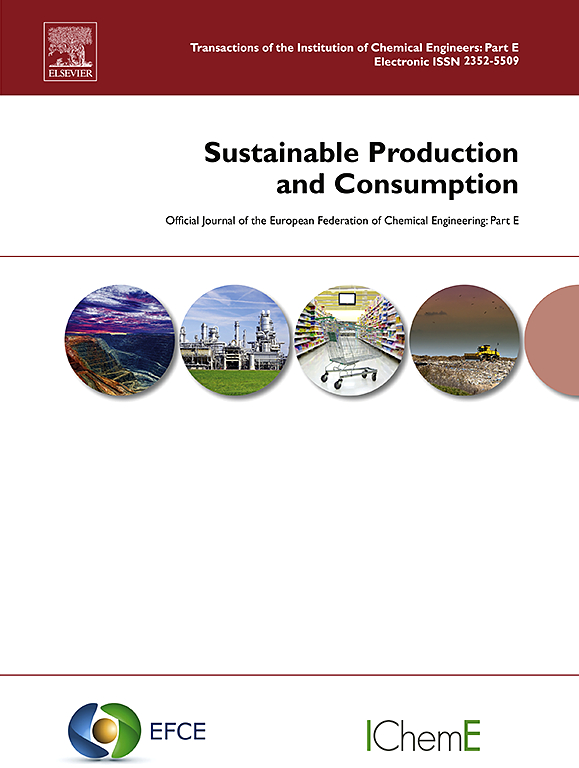A systematic review of agrivoltaics: productivity, profitability, and environmental co-benefits
IF 10.9
1区 环境科学与生态学
Q1 ENVIRONMENTAL STUDIES
引用次数: 0
Abstract
In co-locating agriculture and solar photovoltaics (PV) on the same land parcel, agrivoltaic systems (AVS) afford opportunities to meet growing global food and energy demand while contributing to renewable energy targets. Previous review studies have not concurrently examined how AVS impacts agri-food production and PV electricity generation, profitability, and environmental co-benefits and trade-offs. We systematically review the literature to assess the impact of AVS design, layout and position in the landscape on agri-food production and energy generation, profitability and environmental stewardship. The impact of site-specific factors such as climate, design constraints, policies and the emissions intensity of the local electricity system were also included in the assessment. In addition to renewable energy, we find that AVS provide co-benefits such as enhanced crop/pasture water-use efficiencies (up to 150–300 % improvement), greater land-use efficiency (up to 200 %), reduced irrigation demand (14 % reduction), improved profitability (up to 15 times higher revenue) and more consistent interannual crop/pasture production compared with conventional agricultural production systems in isolation. Such synergies amplify in locations characterized by arid, semi-arid and hot conditions that are conducive to transient or chronic plant water deficit. Further, bifacial solar panels achieve higher electricity yield per unit area compared with conventional monofacial panels, support plant growth by allowing greater solar radiation transmission, and provide flexibility in the selection of azimuth and tilt angle at which solar panels are installed. Bifacial panels thus afford complementarity with common agricultural practices, such as cultivation and/or livestock grazing. Although AVS tend to have higher installation costs than conventional PV systems (about 5–40 %), practitioners of subsidized projects report competitive returns on investment (payback period <10 years) and highlight benefits associated with revenue diversification. The conversion of agricultural land to AVS offers manifold environmental benefits, including mitigation of global warming, reduced eutrophication, and more effective utilization of land resources.

农业发电系统综述:生产力、盈利能力和环境协同效益
将农业和太阳能光伏发电(PV)安置在同一块土地上,农业光伏系统(AVS)为满足日益增长的全球粮食和能源需求提供了机会,同时为可再生能源目标做出了贡献。以前的综述研究并没有同时研究AVS如何影响农业食品生产和光伏发电、盈利能力、环境协同效益和权衡。我们系统地回顾了文献,以评估AVS的设计、布局和在景观中的位置对农业食品生产和能源生产、盈利能力和环境管理的影响。该评估还包括气候、设计限制、政策和当地电力系统的排放强度等特定地点因素的影响。除了可再生能源之外,我们发现,与孤立的传统农业生产系统相比,AVS还提供了一些共同效益,如提高作物/牧场用水效率(提高150 - 300%)、提高土地利用效率(提高200%)、减少灌溉需求(减少14%)、提高盈利能力(提高收入15倍)以及更一致的年际作物/牧场生产。在干旱、半干旱和炎热的地区,这种协同作用会放大,有利于植物短暂或长期缺水。此外,与传统的单面太阳能电池板相比,双面太阳能电池板的单位面积发电量更高,通过允许更大的太阳辐射传输来支持植物生长,并在选择太阳能电池板安装的方位角和倾斜角方面提供灵活性。因此,双面面板与一般农业做法,如耕种和/或放牧牲畜,互为补充。尽管AVS的安装成本往往高于传统光伏系统(约5 - 40%),但补贴项目的从业者报告了具有竞争力的投资回报(投资回收期约10年),并强调了与收入多样化相关的好处。将农业用地转化为AVS具有多方面的环境效益,包括减缓全球变暖、减少富营养化和更有效地利用土地资源。
本文章由计算机程序翻译,如有差异,请以英文原文为准。
求助全文
约1分钟内获得全文
求助全文
来源期刊

Sustainable Production and Consumption
Environmental Science-Environmental Engineering
CiteScore
17.40
自引率
7.40%
发文量
389
审稿时长
13 days
期刊介绍:
Sustainable production and consumption refers to the production and utilization of goods and services in a way that benefits society, is economically viable, and has minimal environmental impact throughout its entire lifespan. Our journal is dedicated to publishing top-notch interdisciplinary research and practical studies in this emerging field. We take a distinctive approach by examining the interplay between technology, consumption patterns, and policy to identify sustainable solutions for both production and consumption systems.
 求助内容:
求助内容: 应助结果提醒方式:
应助结果提醒方式:


